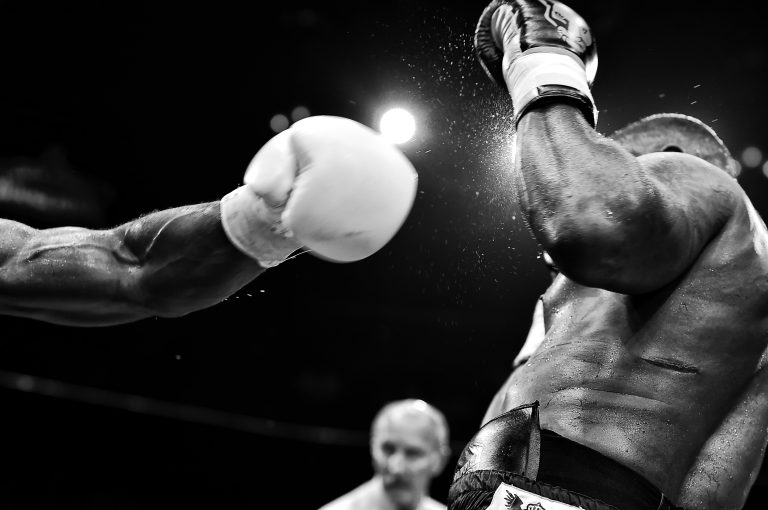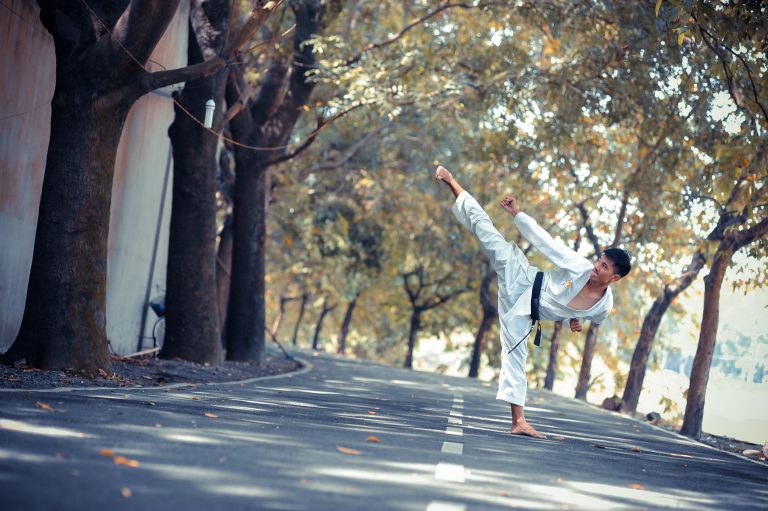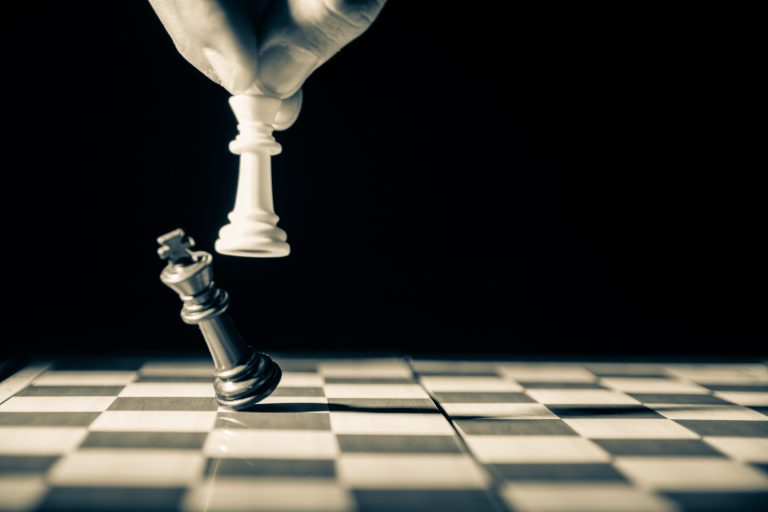Understanding the Belt Color Order in Karate
Karate is a traditional martial art with its roots in Okinawa, Japan. One of its distinctive features is its belt system, which uses a variety of different colors to signify the rank and skill level of a student. Understanding the belt color order in karate is an essential part of the martial art, and in this article, we will provide you with everything you need to know.
The Origins of the Belt Color System in Karate
The use of colored belts to indicate rank is a relatively recent addition to the karate world, having been introduced in the 20th century. Before that, practitioners of karate wore a simple white or black belt, with the color determined by the type of material it was made from.
The introduction of the colored belt system was designed to provide a more visible and tangible way of acknowledging progress and improvement in students. It also helped to facilitate the growth of karate as an international sport, providing a standardized method of ranking across different organizations and countries.
Understanding the Belt Color Order
The order of belt colors in karate varies slightly between different styles and organizations, but there is a broadly accepted hierarchy that is recognized across the martial arts community. Here is an overview of the belt colors and their meanings:
- White belt: The white belt is the starting point for all karate students. It signifies that the student is a beginner and has no formal rank or title.
- Yellow belt: The yellow belt is the first rank a student can achieve. It signifies that the student has started to develop a basic understanding of karate techniques and terminology.
- Orange belt: The orange belt indicates that the student has progressed to an intermediate level of skill and knowledge.
- Green belt: The green belt represents further advancement and indicates that the student has developed a good grasp of the basic techniques and is now able to apply them effectively.
- Blue belt: The blue belt is a significant milestone in a student’s karate journey, indicating that they have reached an advanced level of skill and are ready to start exploring more complex techniques and concepts.
- Purple belt: The purple belt signifies that the student has achieved a high level of proficiency in their karate practice and is now ready to start working towards becoming an expert.
- Brown belt: The brown belt is the last intermediate rank before reaching the highest levels of karate proficiency. It represents a transition period between intermediate and advanced levels.
- Black belt: The black belt is the ultimate symbol of achievement in karate. It signifies that the student has reached the pinnacle of their training and is recognized as an expert in the art.
Earning Your Belt
Earning a karate belt is not easy and requires dedication, hard work, and a commitment to constantly improving your skills. Progression through the ranks generally involves a combination of training, testing, and competition, with each student required to demonstrate their proficiency across a range of techniques and concepts.
At each level, students will be required to perform certain katas (choreographed patterns of movement), techniques, and sparring drills. They will also need to demonstrate their knowledge and understanding of karate terminology, history, and philosophy.
FAQs about Belt Color Order in Karate
Belt color order in karate is an essential element of the martial arts practice, especially in terms of progress and rank. Many people have questions about the color scheme and what each color means. In this blog post, we will answer the most frequently asked questions about belt color order in karate.
Q: What do the different colors of karate belts represent?
Martial arts belts, including those used in karate, often start with a white belt for beginners and progress through the color spectrum. Each belt color is associated with a specific rank or level of skill. Here are the more common belt colors and what they represent:
- White: Beginners with very little experience in karate.
- Yellow: The first belt color after white belt, and it represents the student’s initial advance or step toward intermediate levels. The color yellow represents the sunlight that provides nourishment to plants, symbolizing a growing skillset.
- Orange: Representing the dawn, the color orange represents the beginning of a new day, and this level signifies that the student has acquired a good basic level of knowledge in karate and is now ready to receive advanced techniques.
- Green: The colour green is a symbol of a tree growing, and it signifies the student’s continued growth in karate. It is also associated with nurturing.
- Blue: The color blue represents the sky, and it symbolizes that the student’s knowledge is so vast that it is starting to pervade to great heights. It shows that the karateka is adapting to new techniques and mentally becoming more advanced.
- Purple: The color purple symbolizes the beauty of the evening sky, representing the point at which the student becomes a master in training, with enough knowledge to judge and teach juniors.
- Brown: Brown signifies ripening maturity and examination. At this level, the student has gained advanced knowledge and is ready for a new challenge.
- Black: The most well-known and prestigious color in the spectrum, black belts signify total and complete mastery of all the basic techniques, as well as a thorough understanding of advanced karate techniques. It is important to note that black belt does not signify perfection, but the beginning of the journey of a higher degree of technical expertise.
Q: How long does it take to progress from one belt color to another?
The amount of time required to progress from one belt color to another in karate can vary depending on the training program and the individual karateka’s skill and effort. Some programs have a set timeline for each belt color, while others allow students to progress at their own pace. It usually takes around three to six months of regular training and practice to achieve the next belt.
Q: Does the belt color order differ between karate styles?
While most Japanese-originated karate styles follow the same general belt color order, there may be some slight variations depending on the specific style and organization. Some karate styles may use additional colors or have different rankings at each color level. Conversely, some modern karate styles may have fewer levels of rank or choose to use different colors to represent each rank.
Q: Do I have to earn all of the lower-ranked belts before I can attain a black belt?
Most karate programs will require you to earn all of the lower-ranking belts before progressing to black belt. However, some organizations do have special programs that allow experienced martial artists to take an accelerated course to reach a higher-level belt.
Q: Can I wear my old belt from another martial art in karate?
It is not uncommon for students from other martial arts disciplines to switch to karate training. In that case, the student should wear the belt of the highest rank from their previous art when they start. The karate instructor will determine when the student is ready to switch to a new belt color based on their current level of skill and martial arts knowledge.
Q: Why is a white belt used for beginners?
White is typically used for beginners because it represents a blank slate or a new beginning, much like a piece of paper. It symbolizes that the student is starting with no knowledge, and like a plant growing from the ground, begins from the soil or ground.
Introduction
Karate has been practiced around the world for centuries, and the colored belts in karate represent the progression of a practitioner’s skill level. Every karate student starts with a white belt, and they work their way up through the ranks until they reach the highest level of black belt. Each belt color has its unique significance, and it is essential to understand the order of the colors before you start your journey in karate.
In this post, we will provide a step-by-step guide to the belt color order in karate. We will discuss each belt color’s meaning, the requirements to achieve that belt, and the significance of each colored belt in karate.
The Belt Color Order in Karate
The belt color order in karate typically starts with a white belt and ends with a black belt. There are ten belt colors to progress through in karate, and each belt color represents a new level of mastery.
White Belt
The white belt is the starting point for every karate student. It represents a blank canvas, symbolizing that the student has no knowledge or experience in karate. The white belt also represents the start of the learning journey in karate. The primary focus of the white belt level is to learn the basics, such as stances, punches, and blocks.
Yellow Belt
After achieving the white belt, the next belt color is yellow. The yellow belt represents the sun rising above the horizon, symbolizing the student’s newfound knowledge in karate. The primary focus of the yellow belt level is to learn the basic kata, or forms, of karate.
Orange Belt
The orange belt represents the growth and improvement of the student. The student is now starting to understand the fundamentals of karate, and the focus is on refining their techniques and movements.
Green Belt
The green belt represents the blooming of the plant, symbolizing the student’s continued growth and improvement. The primary focus of the green belt level is to learn more advanced kata and to improve the execution of their techniques.
Blue Belt
The blue belt represents the sky above and the infinite potential of the student’s skills. It indicates that the student is more confident and comfortable in their skills, and they are now able to demonstrate more complex techniques.
Purple Belt
The purple belt represents the dawn of a new day in karate. It symbolizes that the student has achieved a high level of proficiency and is now ready for more advanced teachings in karate.
Brown Belt
The brown belt represents the ripening of the fruit, symbolizing the student’s continued growth and maturity in karate. The primary focus of the brown belt level is to refine techniques to perfection.
Black Belt
The black belt is the final belt in the traditional karate system. It represents the student’s mastery of the basics and the advanced techniques of karate. The primary focus of the black belt level is on teaching, mentoring, and sharing the knowledge and skills learned through their journey in karate.
Conclusion
In conclusion, the belt color order in karate is essential to the progression of a student’s skill level. Each belt color represents a new level of mastery, and it is crucial to understand the belts‘ meanings before starting your journey in karate. Remember, karate is not just about the belts or ranks you achieve, it’s about the journey towards self-improvement and self-defense.
Inhaltsverzeichnis






